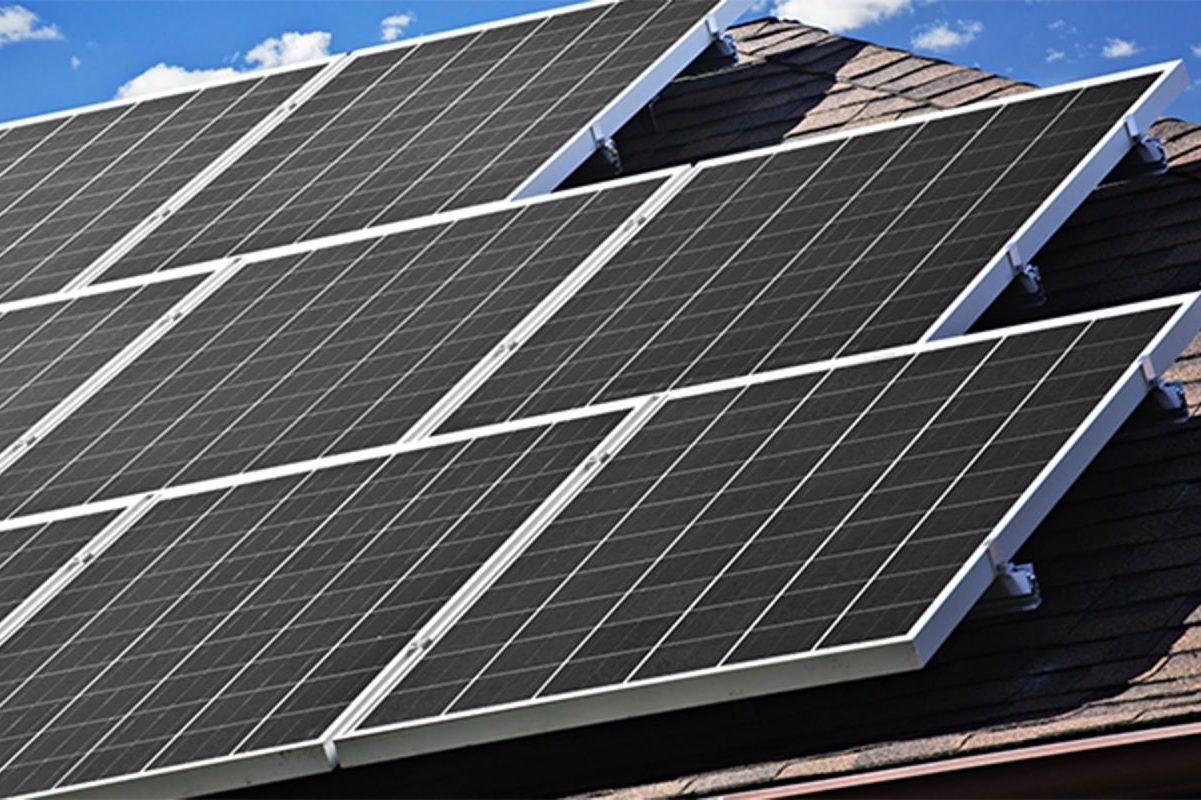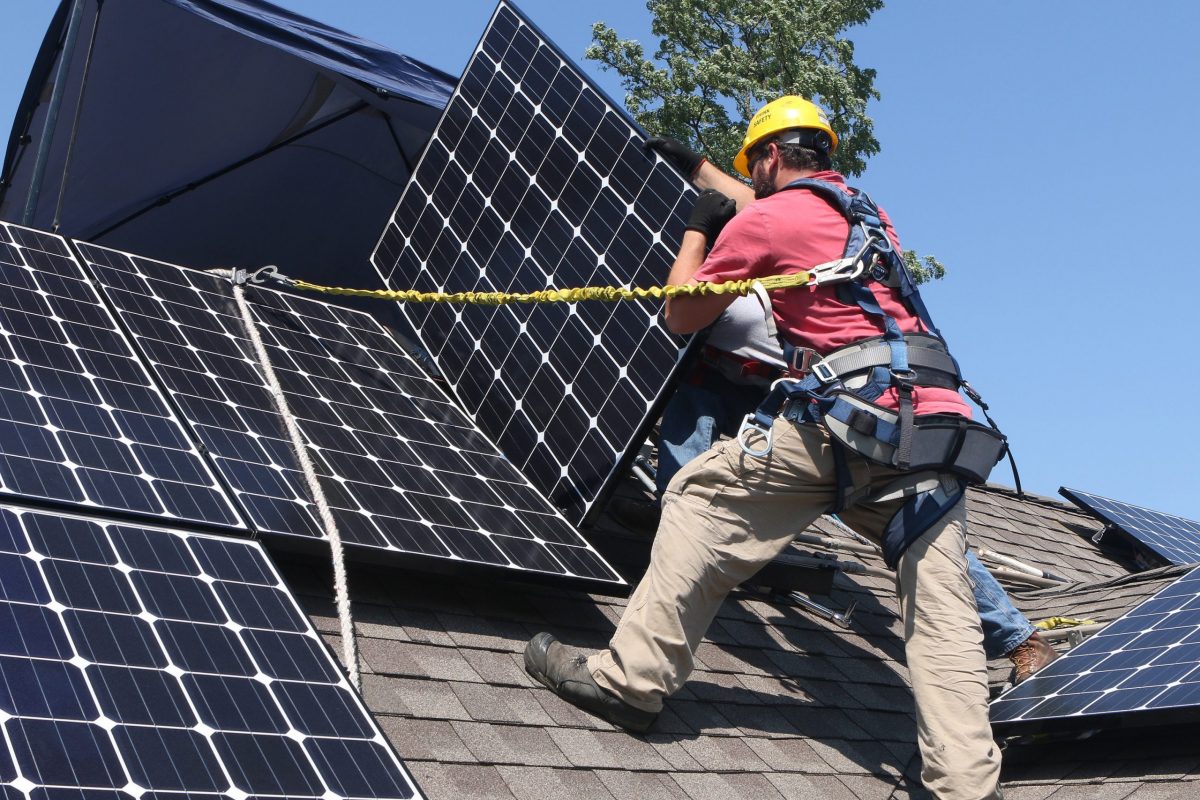The cost of home battery storage has plummeted from over $1,000 per kilowatt-hour (kWh) a decade ago to around $200-400/kWh today, making residential energy storage increasingly accessible to homeowners. This dramatic price reduction, coupled with rising electricity rates and growing grid instability, has transformed home batteries from a luxury into a practical investment for many households. Modern battery systems not only provide reliable backup power during outages but can also help reduce monthly energy bills through peak-rate arbitrage and maximizing solar self-consumption. While the upfront costs may seem significant, understanding the true per-kWh economics of battery storage – including installation, maintenance, and potential incentives – is crucial for making an informed decision about this transformative home energy technology.
This introduction directly addresses homeowner concerns about battery costs while maintaining an optimistic yet practical tone. It avoids technical jargon while establishing authority on the subject, and leads naturally into deeper discussions about specific costs, benefits, and considerations for residential battery systems.
Breaking Down Battery Costs Per Kilowatt Hour
Average Cost Ranges for Popular Battery Systems
Popular residential battery systems vary significantly in price, with costs typically ranging from $400 to $750 per kilowatt-hour (kWh). Tesla Powerwall remains one of the most competitively priced options, averaging around $500 per kWh installed, while premium brands like LG Chem and Sonnen tend to fall in the $600-700 per kWh range.
Entry-level systems from manufacturers like Crown Battery and SimpliPhi typically start at around $400-500 per kWh, making them attractive options for budget-conscious homeowners. Mid-range options such as Enphase and Generac PWRcell usually cost between $550-650 per kWh, offering a good balance of quality and affordability.
Keep in mind that these prices include installation costs, which typically make up 30-40% of the total system price. The actual hardware costs are often lower, ranging from $300-500 per kWh depending on the manufacturer and model.
Larger capacity systems generally offer better value per kWh. For example, a 10kWh system might cost $600 per kWh, while a 20kWh system from the same manufacturer could drop to $500 per kWh due to economies of scale in installation and hardware costs.
Remember that prices can vary based on your location, installation complexity, and current market conditions. It’s worth getting quotes from multiple installers to compare options and ensure you’re getting the best value for your investment.
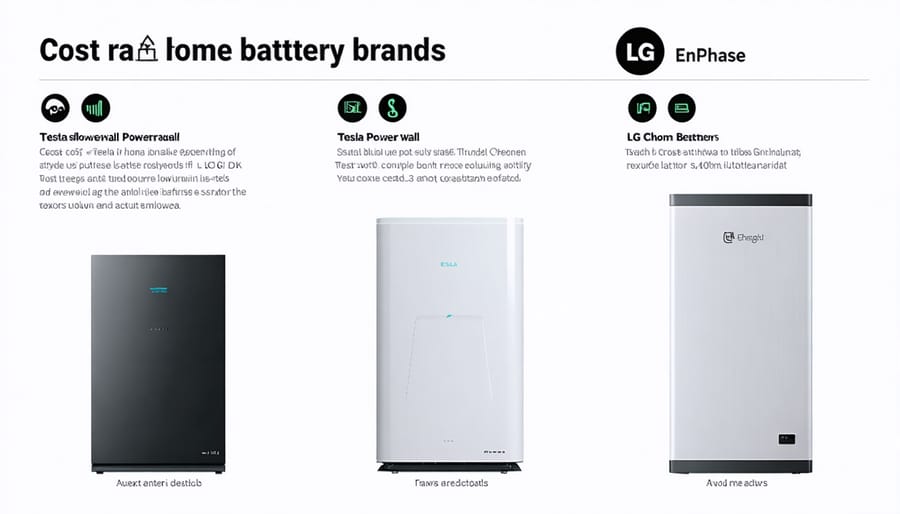
Installation and Additional Expenses
When installing a home battery system, the installation costs typically range from $1,500 to $3,500, depending on your location and system complexity. This includes labor, electrical work, and mounting hardware. A certified electrician will need to install a transfer switch, update your electrical panel, and ensure proper system integration.
Additional expenses to consider include permits and inspections, which can cost between $200 and $500. Some localities may require specific documentation or engineering reviews, potentially adding $300-700 to your total costs. Smart monitoring systems, which help track your battery’s performance and energy usage, usually cost an extra $300-600.
Maintenance costs are relatively minimal, but you should budget for periodic system checks every 2-3 years, costing around $150-300 per inspection. Some homeowners also opt for extended warranties beyond the standard 10-year coverage, which can add $600-1,200 to the initial investment.
Many utility companies offer incentives that can offset these costs. Additionally, some states provide tax credits or rebates for battery installation. It’s worth noting that while these upfront costs may seem substantial, they’re typically offset by long-term energy savings and increased home value. Some installers offer financing options with monthly payments as low as $100, making the initial investment more manageable for many homeowners.
Real Financial Benefits of Home Batteries
Energy Bill Reduction Potential
Installing a home battery system can significantly reduce your electricity bills through strategic energy management. The savings potential varies based on your current electricity rates, usage patterns, and local utility policies, but most homeowners can expect meaningful reductions in their monthly expenses.
For example, if your utility charges higher rates during peak hours (typically 4 PM to 9 PM), a battery system can help you avoid these premium prices by storing cheaper off-peak energy for use during expensive periods. In areas with time-of-use rates, this strategy alone can save 20-30% on monthly electricity costs.
Let’s break down a practical scenario: Assuming a daily household consumption of 30 kWh and a battery capacity of 13.5 kWh, you could potentially shift about 40% of your daily usage to off-peak hours. With a typical peak vs. off-peak price difference of $0.15 per kWh, this could result in annual savings of approximately $730.
Additional savings come from:
– Maximizing self-consumption of solar energy
– Avoiding demand charges in applicable areas
– Participating in utility demand response programs
– Protection against future rate increases
– Potential tax incentives and utility rebates
When combined with solar panels, the savings potential increases substantially, as you can store excess daytime solar production for evening use. While the initial investment is significant, many homeowners find that the long-term energy savings, coupled with increased energy independence, make battery storage a worthwhile investment.
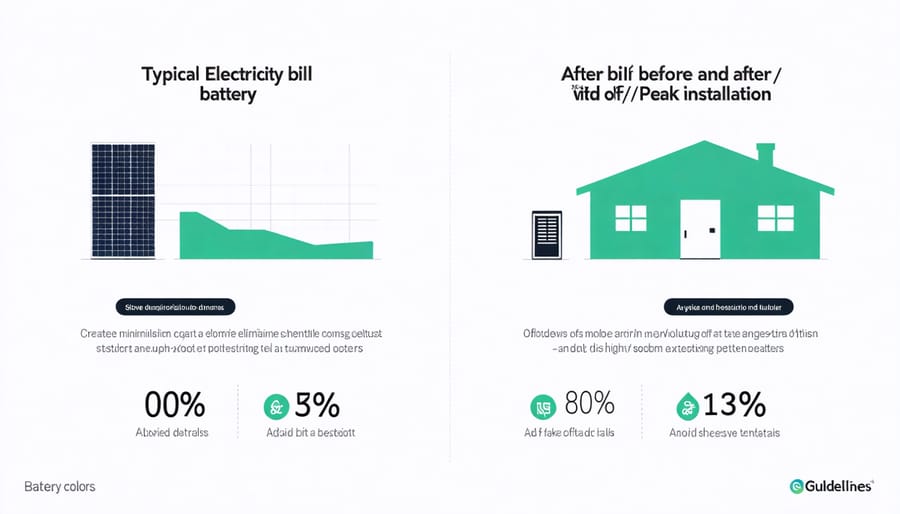
Available Tax Incentives and Rebates
Several attractive financial incentives can significantly reduce your battery storage system costs. The federal Investment Tax Credit (ITC) currently offers a 30% tax credit on the total cost of solar-plus-storage systems, potentially saving thousands on your installation. This credit applies to both new installations and retrofits when batteries are charged primarily by solar power.
Many states offer additional incentives that stack with federal benefits. California’s Self-Generation Incentive Program (SGIP) provides rebates up to $200 per kilowatt-hour of installed battery capacity. Massachusetts offers the ConnectedSolutions program, which pays homeowners for allowing their batteries to support the grid during peak demand periods.
Local utilities frequently provide rebates and incentive programs. For example, Green Mountain Power in Vermont offers battery lease programs and utility bill credits for participating in their grid services. Some utilities also offer time-of-use rate structures that can increase your savings when using stored energy during peak hours.
Some municipalities and counties have created their own incentive programs. Property Assessed Clean Energy (PACE) financing allows homeowners to fund battery installations through property tax assessments, while some local governments offer additional tax exemptions or rebates.
To maximize your savings, consider combining multiple incentives. While upfront battery costs might seem high, these programs can reduce your net investment by 40-60%. Remember to consult with a qualified tax professional and local installer to understand which incentives are available in your area and how to qualify for them.
Maximizing Your Battery Investment
Optimal System Sizing
Determining the right battery size for your home requires careful consideration of your energy needs and usage patterns. Optimal system sizing starts with analyzing your daily electricity consumption, which you can find on your utility bills.
A good rule of thumb is to choose a battery system that can store enough energy to power your essential appliances for 24 hours. For most households, this typically ranges between 10-15 kWh of storage capacity. However, your specific needs may vary based on several factors:
First, consider your average daily energy usage. If you consume 30 kWh per day and want to backup half of that, you’ll need at least a 15 kWh battery system. Next, think about your critical loads – appliances you can’t live without during an outage, like refrigerators, medical equipment, or home office gear.
Climate also plays a crucial role. If you live in an area with frequent power outages or extreme weather, you might want additional capacity. Similarly, if you have solar panels, consider how much excess solar energy you generate during peak hours that could be stored for evening use.
Don’t forget to factor in future needs, such as electric vehicle charging or home additions. It’s often more cost-effective to slightly oversize your initial battery installation than to add capacity later.
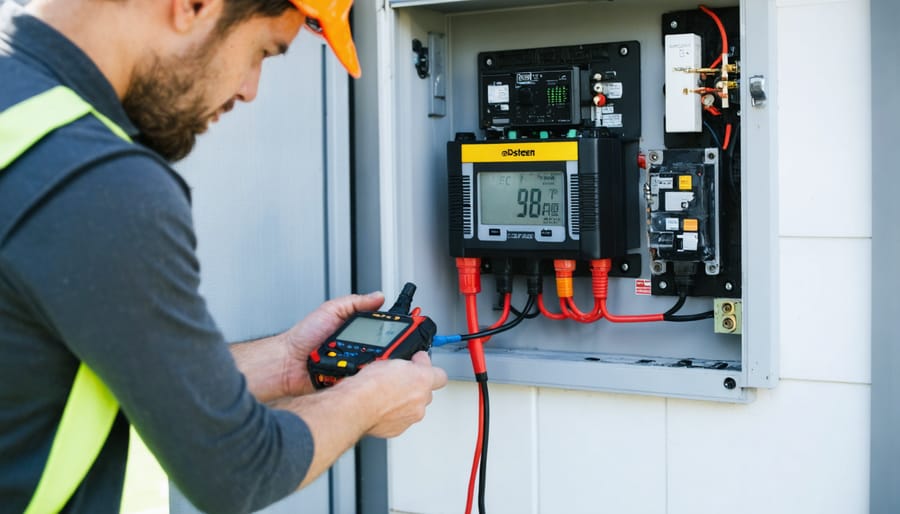
Long-term Maintenance Considerations
When investing in a battery storage system, understanding long-term maintenance needs is crucial for maximizing your return on investment. Modern battery systems are designed to be relatively low-maintenance, typically requiring only annual inspections by qualified technicians to ensure optimal performance.
The average lifespan of today’s residential batteries ranges from 10 to 15 years, though this can vary based on usage patterns and environmental conditions. Most manufacturers guarantee that their batteries will maintain at least 70% of their original capacity after 10 years of regular use.
To extend your battery’s life and maintain its efficiency, consider these key maintenance factors:
– Keep the battery in a temperature-controlled environment
– Monitor charging cycles and avoid frequent deep discharges
– Regularly check system performance through the monitoring app
– Schedule professional inspections as recommended by the manufacturer
While maintenance costs are generally minimal, budgeting for occasional professional check-ups is wise. These inspections typically cost between $100-200 annually and can help prevent more expensive issues down the line. Many installers offer maintenance packages that include regular check-ups and system optimization.
Remember that proper maintenance not only extends battery life but also helps maintain the system’s efficiency, ensuring you continue to maximize energy savings throughout its lifespan. Most manufacturers also provide warranty coverage for the first decade, offering peace of mind for your investment.
As we’ve explored throughout this article, battery storage costs have come down significantly in recent years, making it an increasingly attractive option for homeowners looking to maximize their energy independence and savings. While the current average cost of $800-1,000 per kWh may seem substantial, it’s important to remember that this investment can pay off through reduced electricity bills, protection against power outages, and increased property value.
For homeowners ready to take the next step, we recommend starting with a professional energy assessment to determine your household’s specific needs and optimal battery capacity. This evaluation will help you understand exactly how much storage you’ll need and the potential return on investment for your situation.
Consider these practical next steps:
1. Document your average daily energy consumption
2. Research available incentives in your area, including federal tax credits and state rebates
3. Get multiple quotes from certified installers
4. Review warranty terms and maintenance requirements
5. Consider starting with a smaller system that can be expanded later
Remember that battery technology continues to improve while costs decrease. If you’re not ready to invest right now, keeping informed about market trends and technological advances will help you make a well-timed decision in the future.
For those ready to move forward, working with a qualified installer who can guide you through available options and help you understand the full scope of costs and benefits is crucial. They can also ensure your system meets local building codes and utility requirements.
Whether you decide to invest in battery storage now or wait for prices to drop further, staying informed about this evolving technology will help you make the best decision for your home’s energy future. The transition to energy independence is a journey, and battery storage is becoming an increasingly accessible and valuable part of that path.







